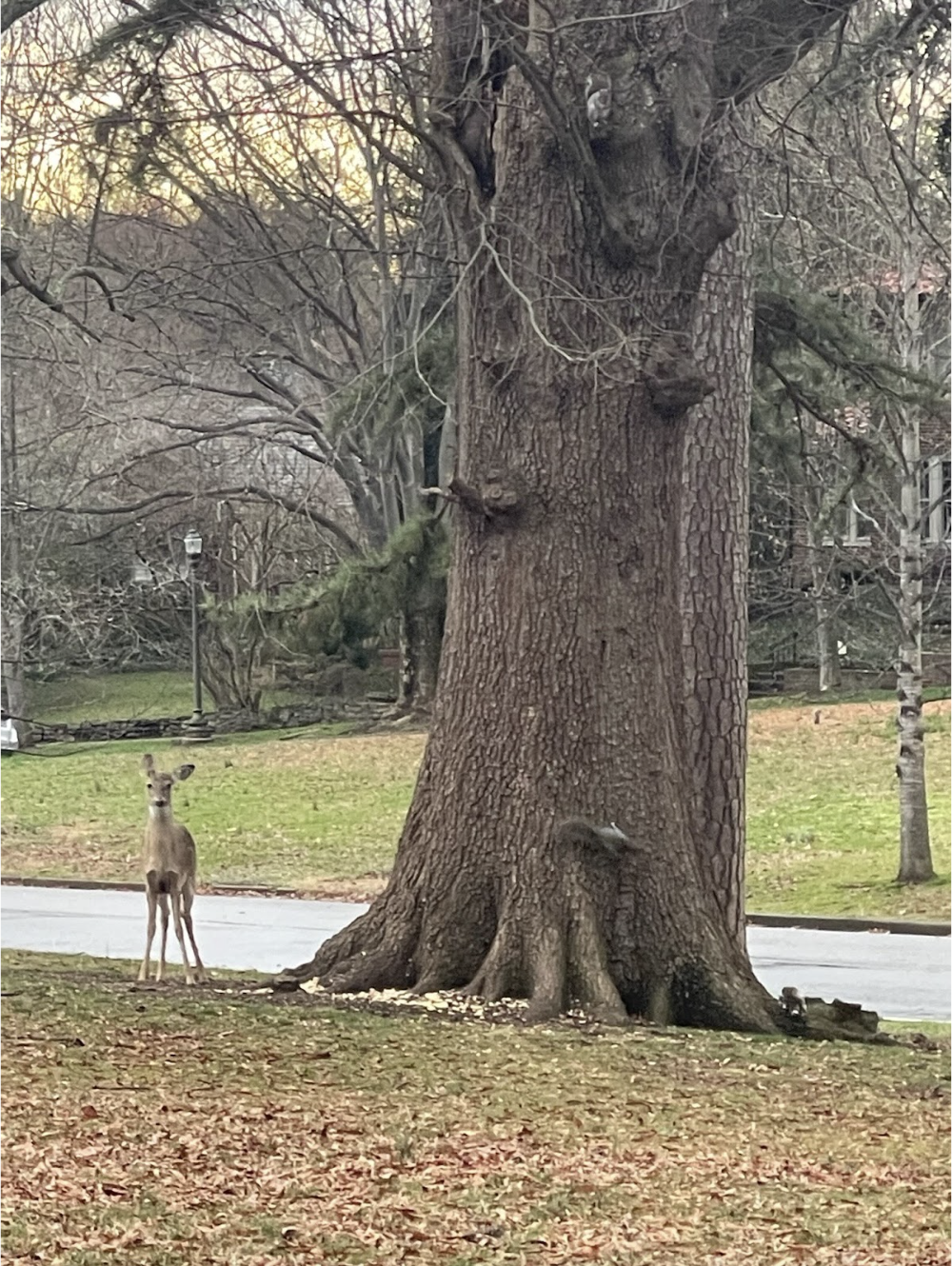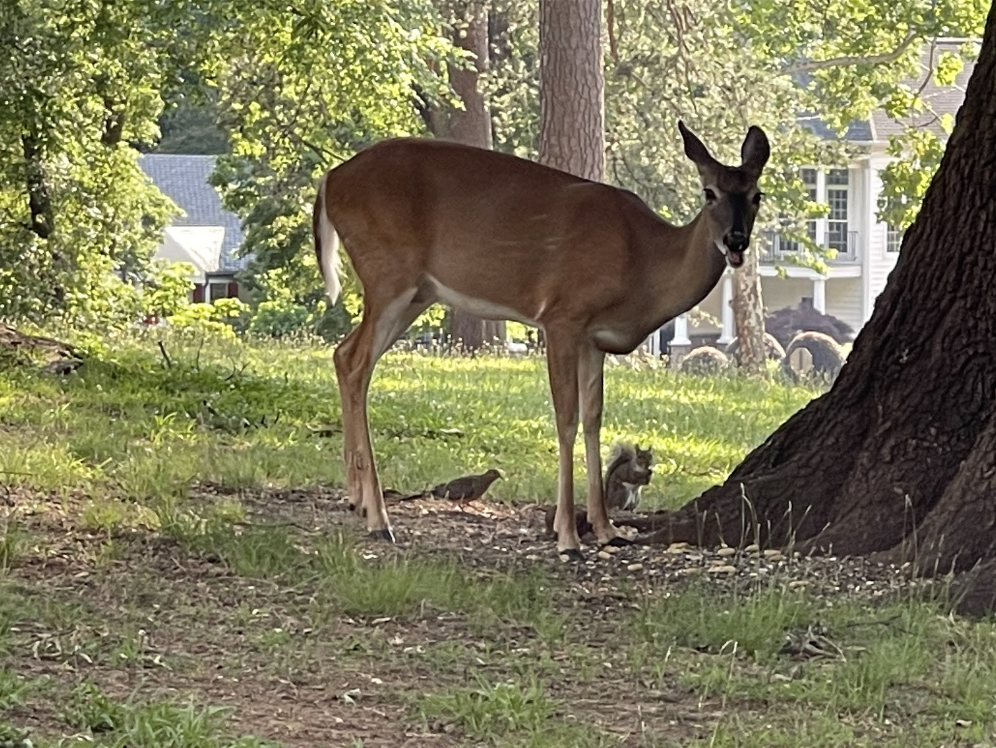Author: Anna Aquino
The ecological functions of dead and decaying trees are beyond compare.
Great news! There is life after death. That dead tree in the backyard supports more life than the living one next to it, lots more. It is probably the most underappreciated feature in the natural world. Birds, mammals, reptiles, bats, tree frogs, native bees, depend on dead and decaying trees. They raise their families in them, store food in them, look for food, perch, sing, hunt, roost, sleep, shelter from weather, storms, and predators. When trees eventually fall, these nurse logs decay on the forest floor, providing a moist substrate for seeds to germinate and grow. Decomposers like bacteria and earthworms transport the products of breakdown through the soil profile for living plants to discover and thrive. The ecological functions of dead and decaying wood are beyond compare.
Snags are dead trees that remain upright to decompose. When they fall they become logs.

The value of a dead loblolly pine: An eagle raises its family, stores food, looks for food, perches, sings, hunts, roosts, sleeps, shelters. Mathews County, VA
Assessing Snags and Logs: Safety
Snags can be common in unmanaged forests, but in managed woodlots and human inhabited areas, there is a dearth of them for several reasons including their higher potential for falling and risk to people and property. Tree Risk Assessment Qualified (TRAQ)(1) certified arborists can assist with discerning whether trees are hazards if unclear. The conservation-minded arborists at Richmond’s TrueTimber recognize the ecological roles of dead or decaying trees and limbs, and can help you judge which are acceptable to remain to fulfill this vital role, plus they are our volunteer partners at Capital Trees’ Low Line.(2)

Challenge: Perception
If a tree is not a risk and can safely remain standing, the next hurdle to overcome in leaving a dead tree is perception. Nancy Lawson, author of Humane Gardening, astutely describes how we commonly think about death in the garden, “we all too often chop down, rake away, chase with leaf blowers, bag up to be hauled off like trash [these decaying materials which] are homes for other species, not to mention restaurants, kitchens and nurseries. For so many animals, life begins in the decay.” (3) This awareness will lead to our wildlife trees becoming special points of pride and fulfillment, beloved features of the landscape, and not examples of neglect. Install Wildlife Tree signage to advertise and open eyes. Wildlife Tree signs plus information and webinars are available online from the Cavity Conservation Initiative. This one-of-a-kind organization is the leader in promoting the essential existence of dead and decaying trees and logs, seeks to educate land managers, change perception of dead trees, and inspire the next generation to take the mission forward. Gillian Martin, the founder of CCI famously says, “when we haul away a dead tree needlessly, we take away half its life’s destiny.”(4)
Most of us are aware of the important ecosystem services provided by living trees. Trees make oxygen, handle stormwater, defeat heat islands,(5) and so much more, but the intangible contributions to our mental health, our peace of mind, deserve recognition.(6) When we sit under a tree we can’t help but feel connected to the natural world. If the tree we are sitting under has lost a branch or two and cavities were created, has cracked or shaggy bark, it becomes the vibrant host habitat to even more wildlife than its living neighbors. Just about every day the author visits her adopted wildlife tree in Byrd Park. It is a living willow oak that has storm damage, several large side branches were cleaved leaving cavities of various sizes in which loads of birds and mammals roost. Decay has set in, no doubt providing the animal visitors with an array of insect delicacies. Seizing on the opportunity to amp up the party, healthy nuts and seeds delivered daily have made this oak a prized spot for all. Woodpeckers, including the rare pileated, blue jays, nuthatches, cardinals, all the usual bird suspects, squirrels galore, and chipmunks are the daytime visitors, and foxes, deer, possums, raccoons, and who knows who populate the bustling nightclub, lucky there is a nice hole at ground level where the bouncer can decide who’s in and who’s out for the evening.


Don’t miss the Downy Woodpecker, upper left.

Hard and soft snags:
Initially a dead tree is considered a hard snag, after decay it becomes a soft snag, each has intrinsic value. The hard snag has firm heartwood, bark, and cambium (the living part of the tree just underneath the bark). These snags are preferred by excavating birds. The soft snag is in stages of advanced decay, and is infiltrated by fungi and insects. On living trees, cavities may be formed naturally, such as when a large branch breaks and the exposed wood begins to rot, or they may be excavated by primary cavity nesters such as pileated woodpeckers. Limbs have fallen off and its top may be missing. Over time the soft snag will weather away, eventually falling over, continuing the cycle of life through decomposition.(7)(8) The Virginia Department of Forestry tells us “when possible, six to eight large, well-spaced cavity trees per acre should be left standing.” It is best if some of these snags are in hard decay and some in soft decay. It is suggested that the snag is amongst living trees and shrubs to protect it from strong weather and to make it a livelier spot.(9)
Thanks to the Federal Migratory Bird Treaty Act of 1918 it is illegal to disturb any active nest of any of the 1026 species named in the Act. The MBTA applies to any and all disturbances of active nests, as applicable to tree care, unless the tree poses an imminent threat to people or property and removal is imperative, a permit for removal of the nest is needed from the US Fish and Wildlife Service.(10)(11) A wildlife biologist or licensed wildlife rehabilitator must assist with the rescue. Find a permitted wildlife rehabilitator using the link in the footnotes.(12) Rehabbers work to reunite birds and other young, including baby squirrels, with their parents through renesting attempts. Work with a permitted rehabber to make the best decisions before doing anything with babies like keeping inside, trying to feed, etc. Their mission includes raising awareness to conservation issues and promoting peaceful existence with wildlife.

A pre-work inspection of trees or hedges is considered a “best management practice” to prevent unintended disturbances, though it is not required; nevertheless destroying an active nest is illegal. It is important to work with the local ecology, but in general birds are nesting from early winter to midsummer and tree care workers must do their due diligence, especially inside of those months. An alarming report in the journal Science reveals that the population of North American birds has dropped nearly 30% since 1970. That’s almost three billion birds gone.(13) This figure has astounded those who care and all measures need to be considered to hope to bring back our birds. The author has been at more landscape project sites than she would like to remember and has never witnessed any landscape company inspect trees or shrubs for nests, much less even discuss, and postpone work if nests were discovered.

An arborist can assist with making a snag in a home landscape. Your snag can be the remnants of a dead tree, or if a living tree needs to be removed for some reason, it can discover its destiny as a snag. The top one third of the tree should be removed as well as some of the side branches. The best smaller site wildlife trees are “topped,” a dirty word and live tree management, to between 30 to 60 feet. This tree architecture will stand the longest—the sail of the upper branches gone. With a chainsaw, the arborist can create a jagged top of crisscrossing cuts. This allows the tree to better collect moisture, and accelerate the invasion of the decomposers. Rot begins and tracks down the trunk (bole); this tree can stand in the landscape for years and years. (14)

Byrd Park Wildlife Tree
If you ever wondered where all the animals disappear to at sunset, or conversely, where are the animals who make their living during the dark hours when the sun is up, they are largely nestled in cavities of trees and logs. Where else are they going to go? We should think twice about removing these homes and about providing these homes. Make snags part of your habitat garden—in your habitat garden you get to leave the leaves, you don’t have to fool with spraying chemicals, you don’t have to cut back your perennials, you get to leave brush piles, you leave dead and decaying wood— and importantly you have more time at the beach, not to mention saving the natural world.
(1)https://www.isa-arbor.com/Credentials/ISA-Tree-Risk-Assessment-Qualification
(2)https://www.humanegardener.com/life-after-death/
(3)https://www.humanegardener.com/life-after-death/
(4)https://cavityconservation.com/
(5)https://www.epa.gov/heatislands/using-trees-and-vegetation-reduce-heat-islands
(6)https://greatergood.berkeley.edu/article/item/why_trees_can_make_you_happier
(7)https://apps.fs.usda.gov/r6_decaid/views/creating_retaining_dead_wood.html
(8)https://wdfw.wa.gov/sites/default/files/2020-07/snags-the_wildlife_tree-1.pdf
(9)https://dof.virginia.gov/wp-content/uploads/VA-Forest-Stewardship-Plan-Appendix_pub.pdf
(11)https://treecareforbirds.com/wp-content/uploads/2022/04/Tree-Care-for-Wildlife-BMPs-4.13.22-2.pdf
(12)https://dwr.virginia.gov/wildlife/injured/rehabilitators/.
(15)https://washingtondnr.wordpress.com/2016/09/11/how-to-make-a-wildlife-tree/


